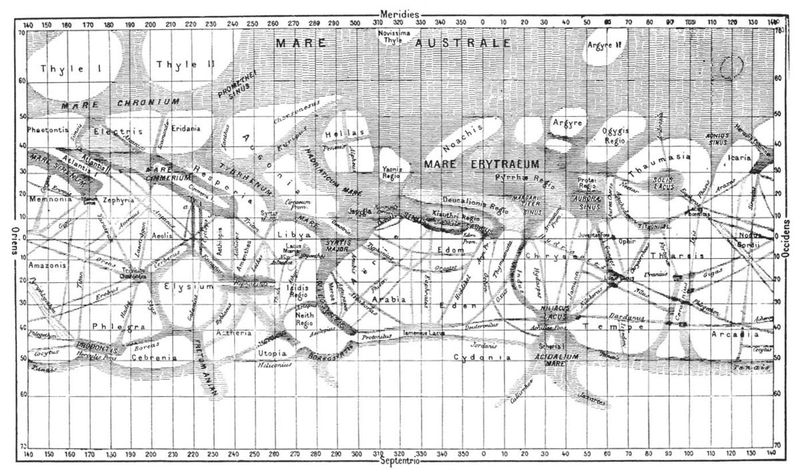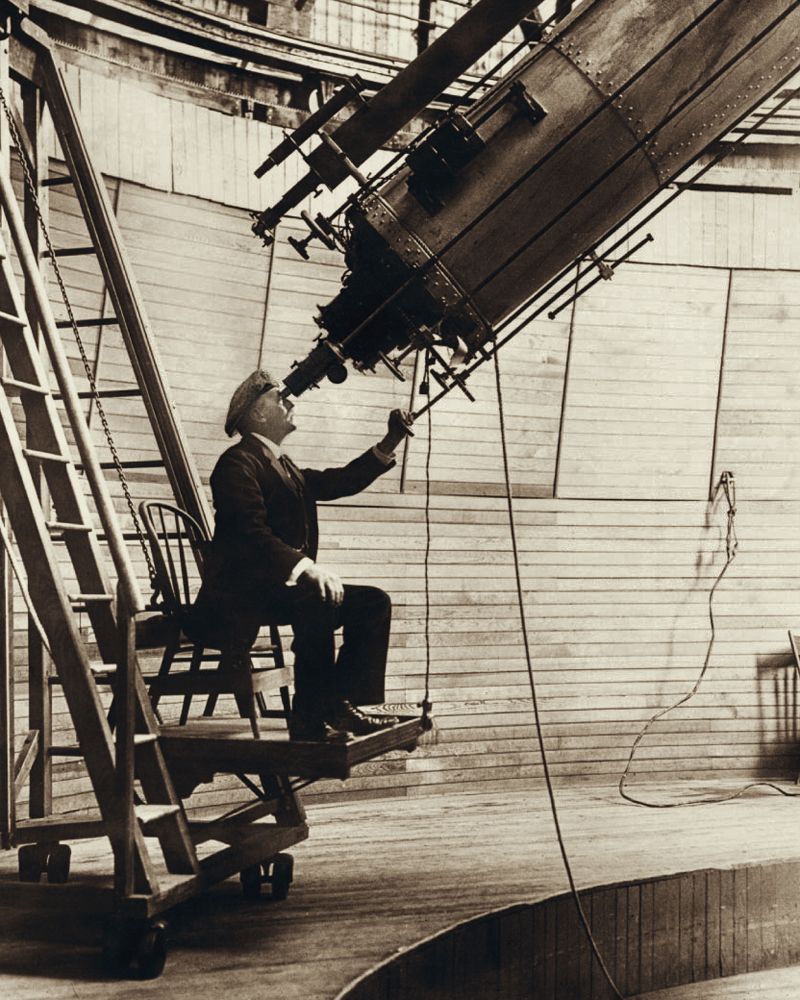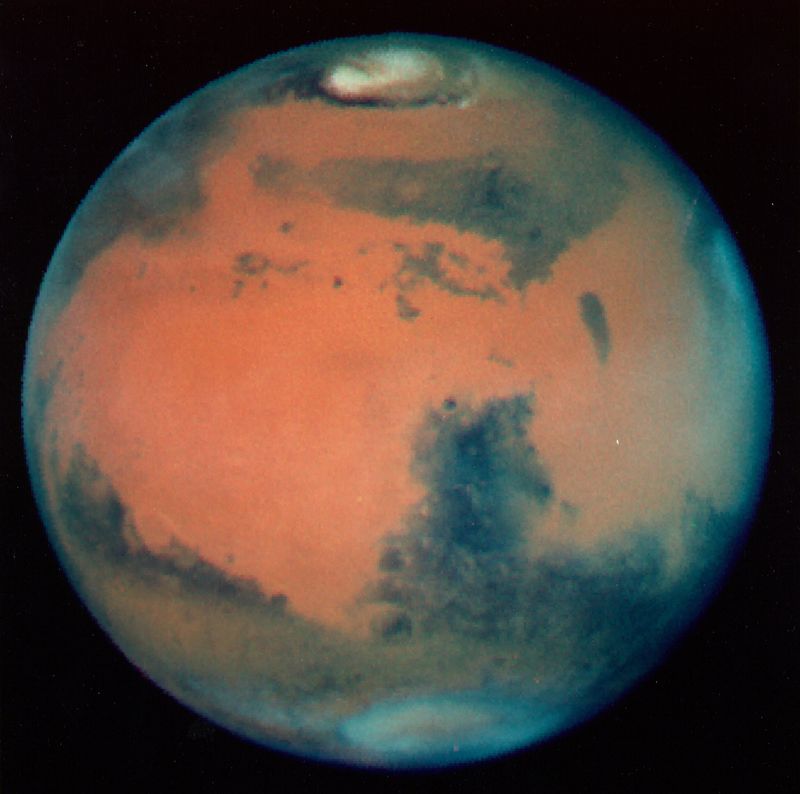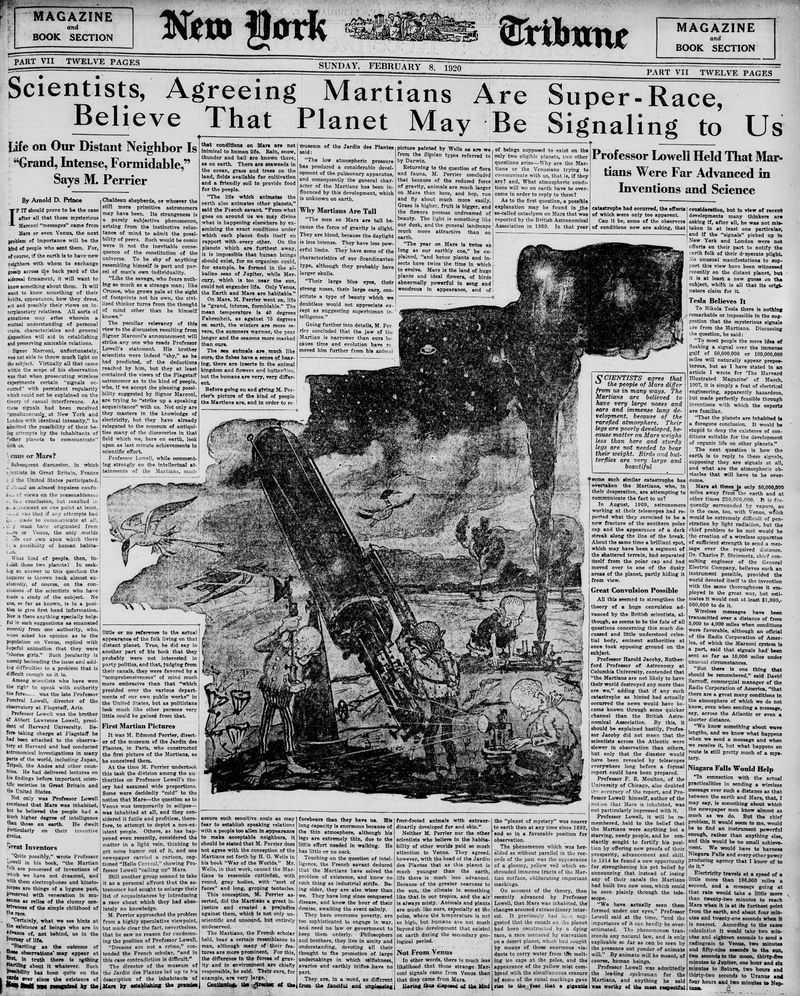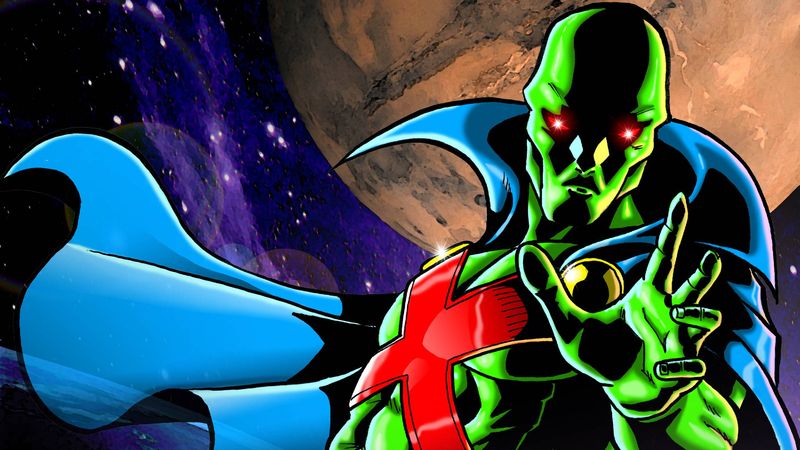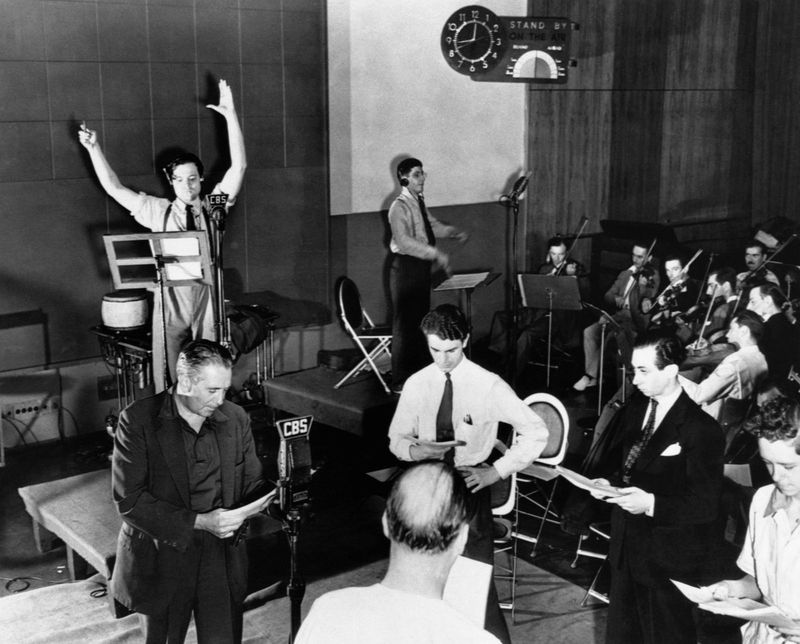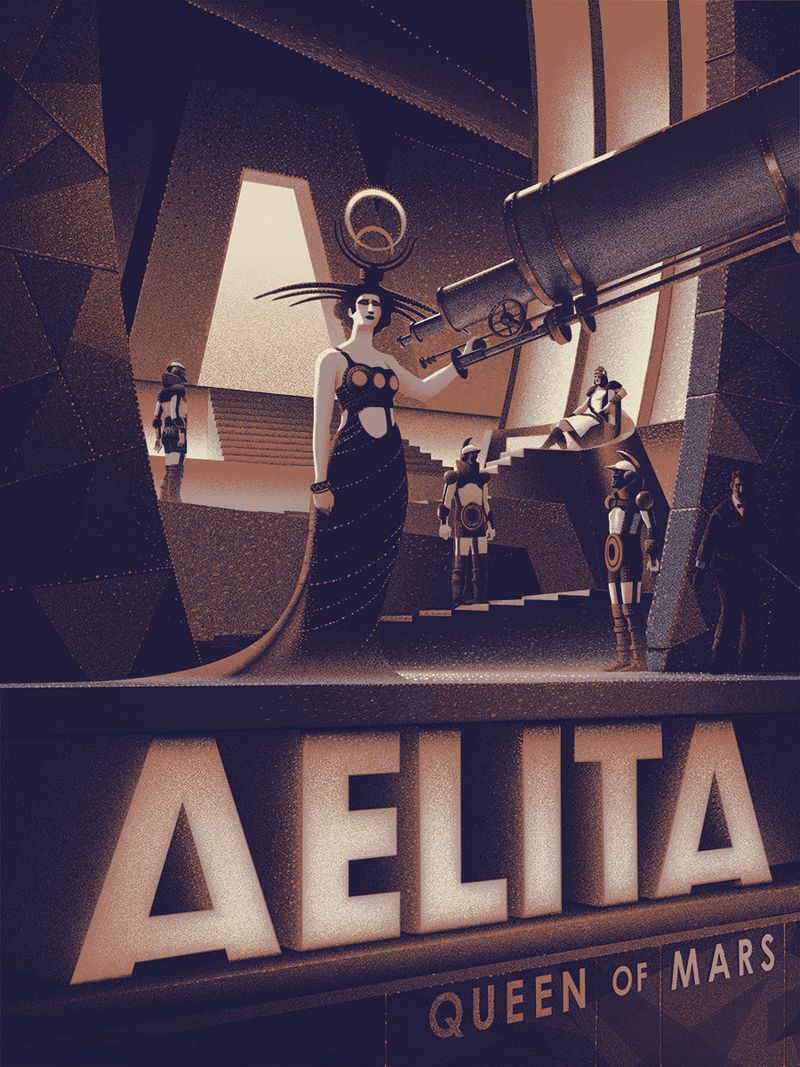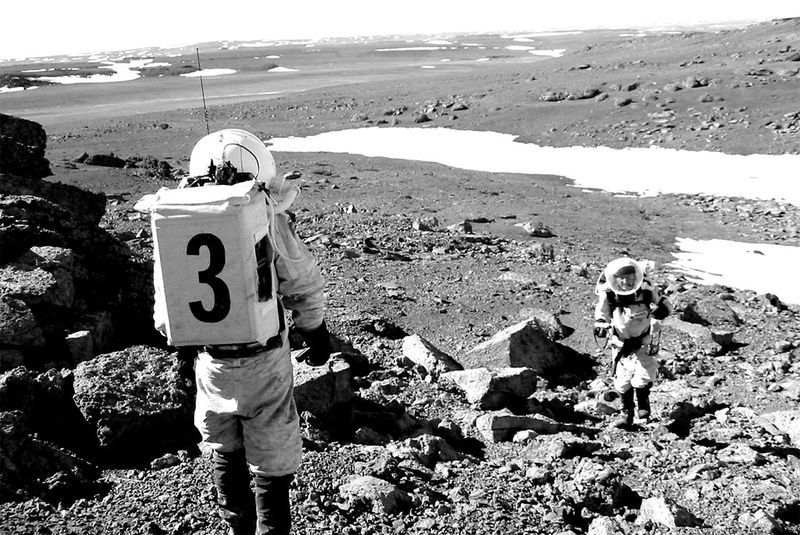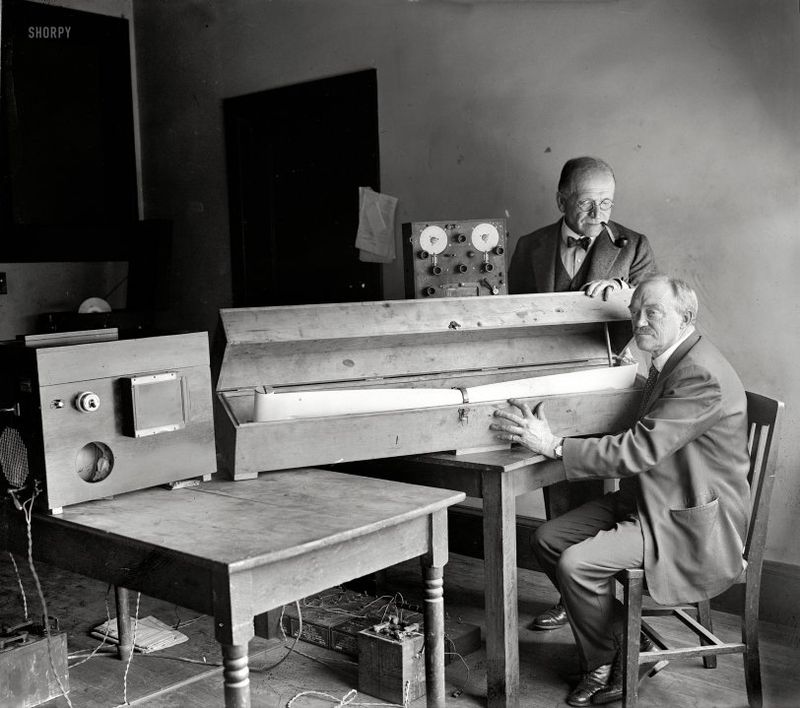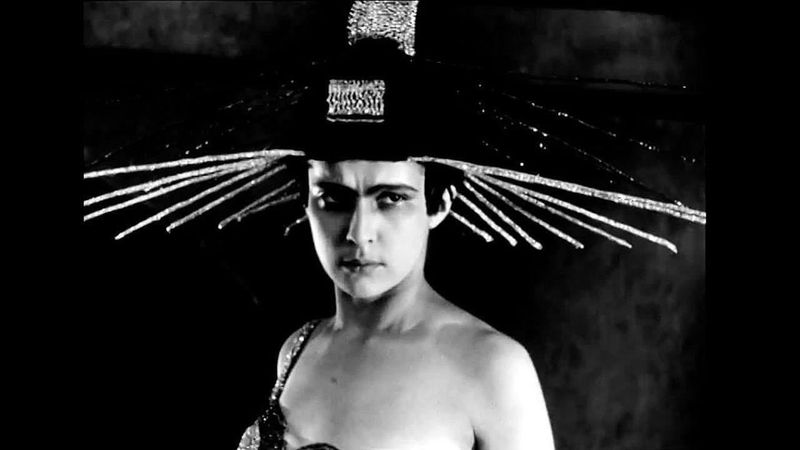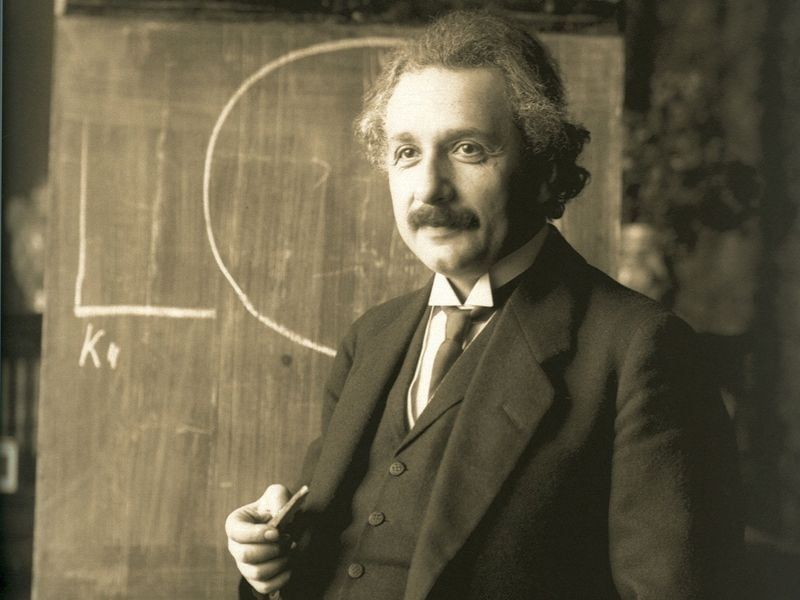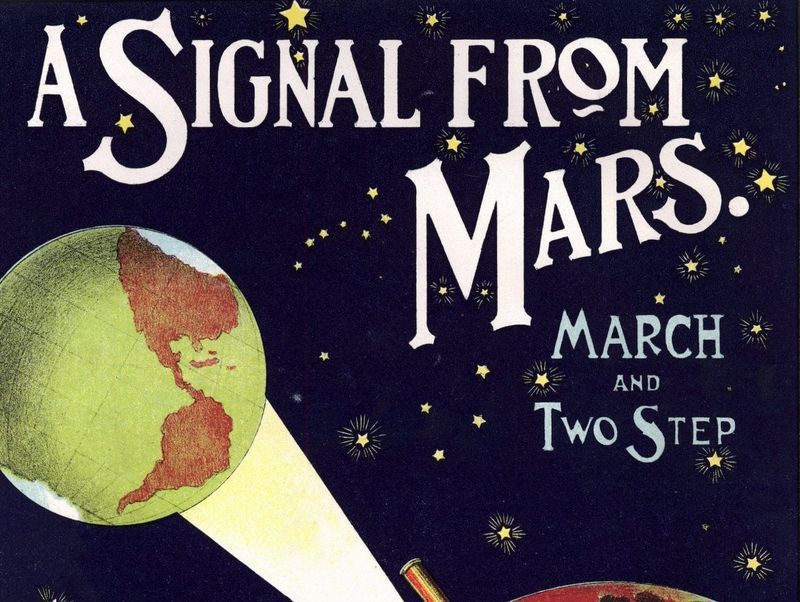In the roaring 1920s, the world was gripped by flapper fashion, jazz music—and a surprisingly widespread belief that Mars was home to an advanced alien civilization. Fueled by early radio broadcasts, new telescopic discoveries, and the imagination of scientists and science fiction writers alike, millions genuinely thought we were not alone. Here are 17 wild facts about the Mars craze that swept the globe nearly a century ago.
1. The “Canals” That Started It All
In 1877, Italian astronomer Giovanni Schiaparelli observed lines on Mars that he called “canali.” American audiences mistranslated this as “canals,” suggesting artificial structures—possibly constructed by intelligent beings. This misinterpretation fueled speculation about advanced civilizations on Mars.
With telescopes not powerful enough to resolve the planet’s surface, the notion of canals captivated the public imagination. People were fascinated by the idea of intelligent Martians designing massive structures for irrigation or transport.
Schiaparelli’s observations were intended to be simple descriptions, yet his “canali” became a cornerstone for Martian myths, inspiring endless debates and theories.
2. Percival Lowell Took It to the Next Level
Percival Lowell, a wealthy American astronomer, passionately believed the canals on Mars were evidence of a dying Martian race struggling to survive. His writings in the early 1900s ignited the public’s imagination and fascination with Mars.
Lowell built his own observatory in Flagstaff, Arizona, to study the Red Planet, dedicating his life and resources to this pursuit. His detailed maps and theories about Martian canals mesmerized many.
Although his ideas were later debunked, Lowell’s fervor for Mars helped cement the planet in popular culture, influencing future generations of both scientists and science fiction writers.
3. Scientists Didn’t Immediately Dismiss the Idea
In the early 1900s, the concept of life on Mars wasn’t immediately dismissed by scientists. While cautious, many astronomers entertained the possibility, though most stopped short of claiming a “super race” existed on the Red Planet.
This era marked a time of discovery and curiosity, with scientific minds open to exploring new ideas. Theories about Martian life were discussed earnestly in scientific circles.
Despite lacking concrete evidence, this open-mindedness contributed to the era’s fascination with Mars, inviting speculation and wonder about what secrets the planet might hold beneath its mysterious surface.
4. Popular Newspapers Spread the Martian Hype
Major newspapers in the 1920s regularly ran headlines about “life on Mars,” treating the topic as a developing news story rather than fringe speculation. This journalistic enthusiasm helped fuel public curiosity and belief in Martian civilizations.
Articles often featured dramatic theories and bold claims, captivating readers with the potential for life beyond Earth. The sensationalism fed into the era’s broader appetite for adventure and discovery.
As a result, the Martian craze wasn’t just confined to scientific circles; it permeated popular culture, shaping public perceptions and keeping the idea of a super race on Mars alive in the public consciousness.
5. Mars and the Super Race
Some theorists in the early 20th century proposed that Martians were more evolved, both technologically and spiritually. This idea of a “super race” dovetailed with the era’s obsession with eugenics and utopian ideals.
Fascinated by the notion of superior beings, people speculated about what such a civilization might look like. They imagined Martians with advanced technologies and enlightened societies, untouched by Earthly woes.
These theories were more than fantasies; they reflected contemporary hopes and anxieties, mirroring humanity’s aspirations and fears as they pondered the possibilities of extraterrestrial life.
6. Science Fiction Took Off—Literally
The early 20th century saw science fiction take off, inspired by Mars’ allure. Writers like H.G. Wells, with “The War of the Worlds,” and Edgar Rice Burroughs, with “A Princess of Mars,” offered thrilling visions of Martian civilizations.
These stories captivated readers, blending scientific possibility with adventure, and further embedded Mars in popular culture. They painted vibrant pictures of alien societies, fostering curiosity and wonder.
Science fiction became a lens through which people explored the unknown, pushing the boundaries of imagination and encouraging a sense of astonishment about our place in the universe.
7. 17 Million Believers by 1926
By 1926, surveys and anecdotes suggested that as many as 17 million Americans believed in Martian life. This staggering number reflects the cultural impact of the era’s astronomical theories and media.
The widespread belief wasn’t just a testament to the times’ scientific curiosity; it also highlighted people’s desire for connection to something greater than themselves. Mars symbolized hope, mystery, and the potential for discovery.
This mass belief in Martians speaks to the human tendency to dream and explore, always searching for answers beyond the stars, driven by the age-old question: Are we alone?
8. Radio Brought Mars Closer
In the 1920s, radio technology spread Mars-related theories and dramatizations, including broadcasts speculating about Martian messages in space noise. These broadcasts captivated listeners and brought the distant Red Planet closer.
Radio shows offered dramatized accounts of life on Mars, blending science fiction with perceived reality. Families gathered around their radios, hanging on every word, their imaginations sparked.
This auditory connection to Mars made the possibility of extraterrestrial life feel more tangible, fueling curiosity and deepening the public’s fascination with the idea of advanced civilizations beyond Earth.
9. Mars in the Movies
Silent films of the 1920s, like “Aelita: Queen of Mars,” portrayed complex Martian societies, helping cement Mars as a stage for futuristic dreams. These movies captivated audiences, blending science fiction with visual spectacle.
The imaginative depictions of life on Mars provided a rich canvas for storytelling, allowing filmmakers to explore themes of technology and society. Audiences were drawn into these otherworldly narratives, their fascination with Mars growing.
Film became a powerful medium for visualizing possibilities, allowing viewers to experience the thrill of alien worlds, further embedding Mars in the cultural zeitgeist.
10. Spiritualists Claimed Martian Contact
During the 1920s, some spiritualists claimed they could communicate with Martians, describing them as tall, luminous beings of superior intelligence. These claims intrigued and entertained the era’s spiritually curious population.
Mediums held séances where attendees eagerly awaited messages from the Martian super race, their imaginations fueled by tales of otherworldly encounters. The belief in spiritual connections to Mars offered comfort and excitement.
While skeptics questioned these claims, the idea that Martians might be reaching out captured the imagination, blurring the line between spiritual belief and science fiction in a time of exploration.
11. The Martian Telegraph Hoax
In 1924, rumors swirled that a special U.S. Navy team had intercepted radio signals from Mars during a close approach to Earth. Though false, the story captured the public’s imagination and was widely believed.
The excitement surrounding these supposed signals underscored the era’s openness to the possibility of alien contact. People were eager to believe that communication with Martians was within reach.
This hoax highlighted the power of media to shape perceptions and the public’s willingness to embrace the extraordinary, reflecting the ongoing fascination with Mars and the potential for life beyond our world.
12. National “Radio Silence Day”
On August 21, 1924, the U.S. asked all radio stations to go silent for five minutes, hoping to pick up Martian signals during a close planetary approach. Though no signals were found, the event showcased the era’s intrigue with Mars.
This national experiment symbolized humanity’s yearning to connect with the cosmos, reflecting the hopeful curiosity of the time. People listened intently, their imaginations alive with possibilities.
The Radio Silence Day exemplified the blend of science and wonder, where the boundaries of reality and fantasy blurred, driven by the longing to uncover extraterrestrial mysteries.
13. Mars Fever Went Global
Belief in Martians wasn’t limited to the U.S.; Europeans, particularly in France and the U.K., embraced the theories with equal enthusiasm. The Martian craze transcended borders, captivating imaginations worldwide.
European newspapers and media outlets echoed the sensational stories, spreading the fascination with Mars across continents. The idea of life on Mars inspired discussions and debates.
This global interest reflected shared human curiosity and the collective desire to explore the universe’s mysteries, uniting people in their dreams of discovering intelligent life beyond Earth.
14. Even Einstein Was Asked
Albert Einstein, a figure of immense scientific authority, was reportedly asked in the 1920s about intelligent life on Mars. His response neither confirmed nor denied the possibility, leaving the mystery open.
Einstein’s comments, or lack thereof, fueled the ongoing fascination with Mars, suggesting that if even he was open to the idea, perhaps it wasn’t so far-fetched. His involvement lent credibility to the speculation.
The question posed to Einstein reflects the era’s curiosity and the widespread impact of the Martian theories, captivating even the greatest minds of the time.
15. Mars Societies Were Formed
During the 1920s, clubs and amateur science groups dedicated to Mars sprang up across the country, complete with newsletters and speculative lectures. These societies were fueled by a shared passion for the Red Planet.
Members gathered to discuss the latest theories, share observations, and dream about the possibilities of Martian life. These communities embodied the era’s spirit of exploration and wonder.
The formation of Mars societies illustrates the depth of public interest and the desire to foster a sense of community around the shared fascination with extraterrestrial life.
16. Martians as a Moral Mirror
Some thinkers of the 1920s viewed Martians not as invaders but as ideal beings—living in harmony, untouched by Earth’s wars and pollution. This perspective offered hope wrapped in fantasy, reflecting societal aspirations.
Martian societies were imagined as utopias, embodying the virtues and advancements humanity strived for. They served as a moral mirror, prompting reflection on Earthly challenges.
This idealization of Martians underscored a yearning for peace and progress, where the vision of an advanced civilization became a beacon of hope for a troubled world.
17. The Legacy Still Lingers
While we’ve since learned Mars is likely lifeless, the 1920s obsession with an advanced Martian race paved the way for modern sci-fi, space exploration, and the continuing question: What if we’re not alone?
The legacy of that era’s fascination endures, influencing countless works of fiction and inspiring scientific endeavors. Mars remains a symbol of mystery and potential.
This enduring legacy reflects humanity’s insatiable curiosity and the timeless allure of the unknown, where the dream of discovering life beyond Earth continues to captivate and inspire.

